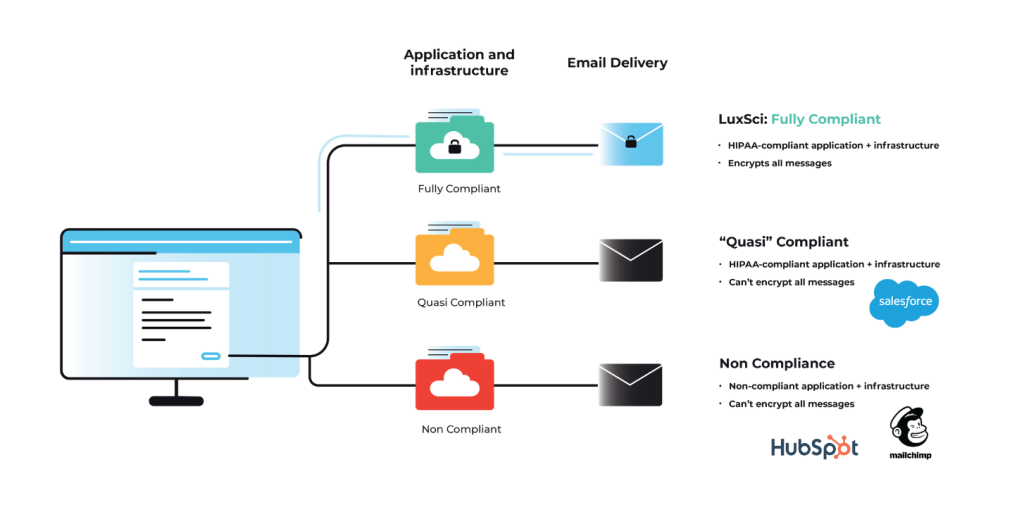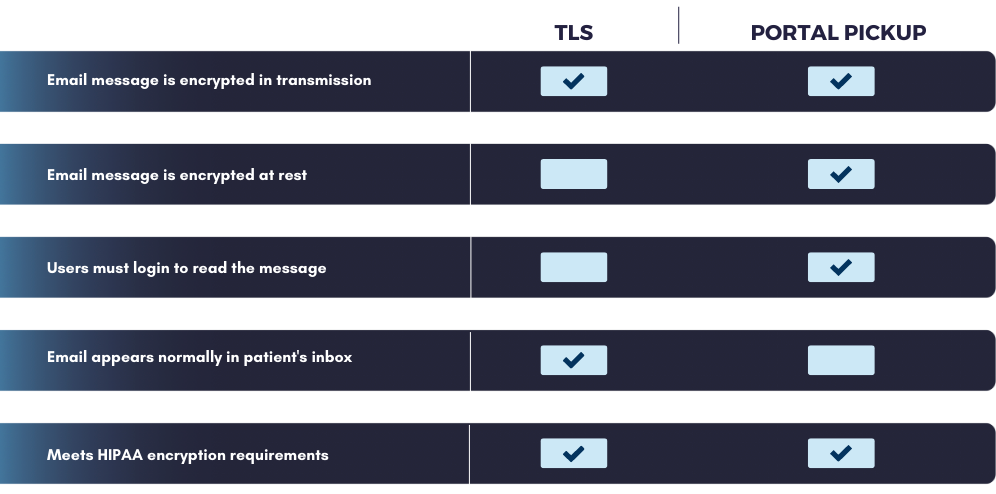Email marketing for healthcare is targeted communication strategy that medical organizations use to engage patients, promote wellness services, share health education content, and encourage preventive care while maintaining regulatory compliance and patient privacy protections. This specialized approach helps healthcare providers, payers, and suppliers build stronger relationships with their communities through informative, valuable email communications. Email marketing for healthcare differs from traditional marketing because it must balance promotional objectives with medical ethics, patient trust, and strict privacy regulations. Understanding email marketing for healthcare helps medical facilities develop communication programs that support patient engagement, improve health outcomes, and grow their practices while respecting regulatory requirements and maintaining professional standards.
The Use of Email Marketing For Healthcare
Email marketing for healthcare encompasses several communication types including patient education newsletters, appointment reminders, wellness program promotions, and health screening campaigns. Patient education emails provide valuable health information, seasonal wellness tips, and disease management guidance that helps recipients make informed healthcare decisions. These educational communications build trust and establish healthcare organizations as reliable health information sources.
Appointment and follow-up communications use email to streamline patient care coordination, reduce no-show rates, and improve treatment adherence. Wellness program promotions encourage patients to participate in health screenings, fitness classes, vaccination clinics, and other preventive care activities. Event marketing emails promote health fairs, educational seminars, and community health initiatives that benefit both patients and the broader community. Service line marketing allows healthcare organizations to promote specific departments or specialties to patients who have expressed interest in related services. Women’s health programs, cardiac care services, and orthopedic treatments can be marketed to relevant audience segments based on demographic factors and self-reported health interests rather than protected medical information.
Patient retention campaigns use email to maintain ongoing relationships with existing patients, encouraging regular check-ups, annual screenings, and continued engagement with healthcare services. These campaigns focus on long-term health maintenance rather than immediate sales objectives.
Regulatory Framework and Privacy Considerations
Email marketing for healthcare must comply with HIPAA privacy regulations that govern how protected health information can be used for communication purposes. Healthcare organizations cannot use patient medical records, diagnosis codes, or treatment histories for marketing without explicit written authorization from patients. General health education content can be sent without authorization, but targeted campaigns based on specific health conditions require proper consent procedures.
The CAN-SPAM Act applies to all commercial healthcare emails, requiring truthful subject lines, clear sender identification, valid physical addresses, and functional unsubscribe mechanisms. Healthcare organizations must honor opt-out requests promptly and maintain suppression lists to prevent future unwanted communications. State privacy laws may impose additional requirements that healthcare organizations must research and implement. Business associate agreements become necessary when healthcare organizations use third-party email platforms or service providers to handle patient information during marketing activities. These agreements ensure that vendors maintain appropriate privacy protections and comply with healthcare industry regulations. Healthcare organizations remain responsible for ensuring their email marketing practices meet all applicable regulatory requirements.
Patient consent management requires systems to track when and how patients provided authorization for different types of marketing communications. Organizations need documentation showing patient consent for targeted campaigns and procedures for updating preferences when patients change their communication choices.
Technology Platforms and Integration Requirements
Email marketing for healthcare requires specialized platforms that provide HIPAA compliance features, data encryption, audit logging, and business associate agreements. These platforms must protect patient information during campaign creation, delivery, and performance tracking while maintaining security standards appropriate for healthcare data. Standard consumer email marketing platforms may not provide adequate privacy protections for healthcare communications.
Integration capabilities allow email marketing for healthcare systems to connect with electronic health records, patient management platforms, and appointment scheduling systems. These integrations enable automated campaign triggers based on appointment dates, discharge events, or routine care intervals without exposing sensitive medical information to unauthorized personnel. Single sign-on features allow staff to access email marketing tools using existing healthcare system credentials. List management functionality should support consent tracking, preference management, and compliance reporting requirements specific to healthcare organizations. Segmentation tools need to work with demographic and behavioral data rather than protected health information to maintain privacy compliance. Automated workflows can personalize communications based on publicly available information and patient preferences.
Security monitoring and audit trails provide detailed logging of who accesses patient information, what campaigns are created and sent, and how patient data is used for marketing purposes. These features support compliance demonstrations during regulatory reviews and help organizations investigate potential privacy incidents.
Patient Engagement and Content Strategies
Email marketing for healthcare should prioritize patient value and health outcomes over purely promotional messaging to build trust and encourage long-term engagement. Educational content performs better than sales-focused communications because patients appreciate receiving useful health information that helps them make better healthcare decisions. Content should be evidence-based, medically accurate, and reviewed by qualified healthcare professionals before distribution.
Personalization strategies must balance engagement benefits with privacy requirements and regulatory constraints. Basic personalization using names, preferred languages, and geographic information can improve response rates without requiring protected health information. More detailed personalization based on health interests or conditions requires explicit patient authorization and careful data management procedures. Timing and frequency considerations help healthcare organizations maintain patient engagement without overwhelming recipients with excessive communications. Different types of healthcare emails may require different sending schedules based on urgency, content type, and patient preferences. Appointment reminders need timely delivery, while educational newsletters can follow regular monthly or quarterly schedules.
Interactive content such as health assessment questionnaires, symptom checkers, and wellness challenges can increase patient engagement while providing valuable health information. These interactive elements should collect only necessary information and maintain appropriate privacy protections throughout the user experience.
Performance Measurement and Optimization
Email marketing for healthcare should be evaluated using metrics that reflect patient engagement, health outcomes, and organizational objectives rather than purely commercial success indicators. Appointment booking rates, health screening participation, and patient satisfaction scores provide more meaningful performance measurements than traditional marketing metrics alone. These healthcare-specific metrics demonstrate how email communications support patient care and organizational mission.
Patient feedback collection through surveys, focus groups, and direct communication helps healthcare organizations understand recipient preferences and identify areas for improvement. Regular feedback collection demonstrates commitment to patient-centered communication approaches and provides insights for optimizing future campaigns. Feedback should guide content development, timing decisions, and overall communication strategy adjustments. A/B testing can improve campaign performance by comparing different subject lines, content formats, sending times, and call-to-action approaches while maintaining compliance requirements. Testing should focus on elements that affect patient engagement and health outcomes rather than manipulative tactics that might undermine patient trust.
Long-term performance analysis helps healthcare organizations understand the cumulative impact of their email marketing efforts on patient relationships, care utilization patterns, and health outcomes. This analysis supports continuous improvement initiatives and demonstrates the value of patient communication investments to organizational leadership and stakeholders.








 SSL and TLS play critical roles in securing data transmission over the internet, and AES-256 is integral in their most secure configurations. The original standard was known as Secure Sockets Layer (SSL). Although it was replaced by Transport Layer Security (TLS), many in the industry still refer to TLS by its predecessor’s acronym. While TLS can be relied on for securing information at a high level—such as US Government TOP SECRET data—improper or outdated implementations of the standard may not provide much security.
SSL and TLS play critical roles in securing data transmission over the internet, and AES-256 is integral in their most secure configurations. The original standard was known as Secure Sockets Layer (SSL). Although it was replaced by Transport Layer Security (TLS), many in the industry still refer to TLS by its predecessor’s acronym. While TLS can be relied on for securing information at a high level—such as US Government TOP SECRET data—improper or outdated implementations of the standard may not provide much security.



